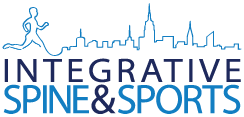“IT Band” Syndrome – Diagnosis, Causes and Prevention
October 16, 2016
It’s marathon season, that time of year when New Yorkers rack up mileage and push themselves past their limits in pursuit of personal bests. Race preparation is a demanding process that tests every runner’s mental toughness and physical endurance. It’s essential for all athletes to train with common sense to prevent injury and ensure the best chance for success.
Runners are accustomed to pain. And while soreness and fatigue can be expected as the miles pile up, it’s important to differentiate between muscular stress and actual injury. One of the most frequent injuries suffered by runners is iliotibial band syndrome, known as ITBS.
The “IT band” is a ligament that runs down the outside of the thigh from the hip to the shin and helps to stabilize and mobilize the knee. ITBS occurs when the ligament is compromised, becoming tight or inflamed. If left unchecked, movement of the knee, especially running, becomes painful, and can sideline an athlete for weeks, or even months.
The good news is, ITBS is treatable and with a focused regimen, preventable. Many causes, including bad form (hip adduction & knee rotation) and overuse, are avoidable. A less obvious but frequent source of ITBS is muscular weakness, specifically, weakness in the glutes and abdominals.
The following three exercises target these foundational muscles, building running strength, increasing flexibility and providing stability. For added difficulty, try holding a light weight during each exercise.
1) Hip Hikes

(Baker, R. L., & Fredericson, M. “Iliotibial band syndrome: Biomechanical implications and exercise interventions.” Physical Medicine and Rehabilitation Clinics of North America, (2016): 53-77. Web.)
Hip Hikes target the Gluteus Medius, the muscle responsible for a runner’s hip motion.
Begin by standing on an elevated surface. Suspend one leg keeping your standing leg straight. Focusing on hip activation, lower your suspended foot down to the ground and then carefully lift it back up until both feet are level. Use a dowel for balance, if needed. Complete 15 repetitions and then repeat with the other leg.
2) Single leg squat

(Baker, R. L., & Fredericson, M. “Iliotibial band syndrome: Biomechanical implications and exercise interventions.” Physical Medicine and Rehabilitation Clinics of North America, (2016): 53-77. Web.)
Single Leg Squats strengthen the largest muscle in the body, the Gluteus Maximus, providing core power, balance and stability.
Begin by standing on one leg with the knee bent to a 45 degree angle. Lean the upper body forward, transferring weight bearing to the muscles of the thigh. Lower into a squat, controlling the weight at the bottom. Keeping the knee and the abs stable, raise the body back to the starting position for 15 repetitions. Repeat with the other leg. Again, use a dowel or a chair until you’re able to balance on your own.
3) Single leg deadlift

(Baker, R. L., & Fredericson, M. “Iliotibial band syndrome: Biomechanical implications and exercise interventions.” Physical Medicine and Rehabilitation Clinics of North America, (2016): 53-77. Web.)
The Single Leg Deadlift is a progression from the Single Leg Squat, targeting the Gluteus Maximus and the Abdominals. When done correctly, this exercise simulates the alternating arm and leg motions of running.
Begin by balancing on one leg, bending slightly at the knee. Keeping the abdominals tight, lower the upper body as much as possible, stopping when the trunk is parallel to the ground. Focusing on knee alignment and body control, lower the opposite arm down to the supporting foot. Squeeze the glutes to raise the body back to the starting position for 15 repetitions. Repeat with the opposite leg.
As always, if you experience pain with this or any exercise program, consult with your health care professional.
References
1) Baker, R. L., & Fredericson, M. “Iliotibial band syndrome: Biomechanical implications and exercise interventions.” Physical Medicine and Rehabilitation Clinics of North America, (2016): 53-77. Web.
2) Distefano, Lindsay J., J. Troy Blackburn, Stephen W. Marshall, and Darin A. Padua. “Gluteal Muscle Activation During Common Therapeutic Exercises.” J Orthop Sports Phys Ther Journal of Orthopaedic & Sports Physical Therapy7 (2009): 532-40. Web.
3) Willy, Richard W., and Irene S. Davis. “The Effect of a Hip-Strengthening Program on Mechanics During Running and During a Single-Leg Squat.” J Orthop Sports Phys Ther Journal of Orthopaedic & Sports Physical Therapy9 (2011): 625-32. Web.












